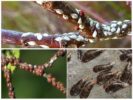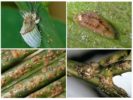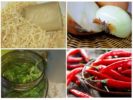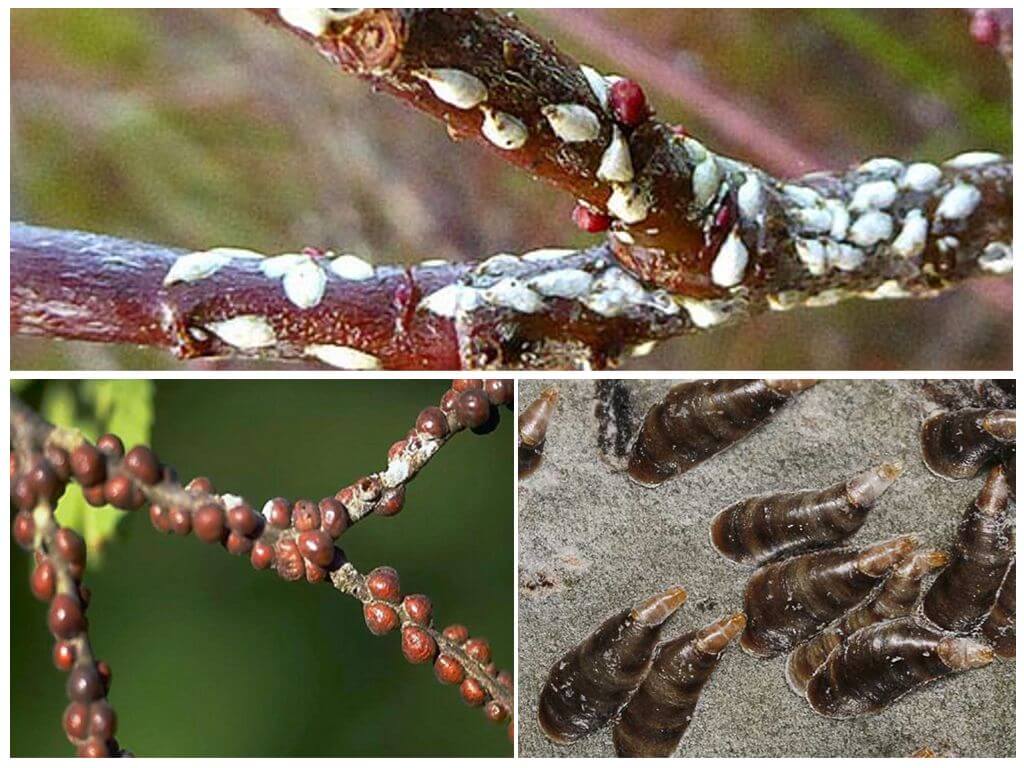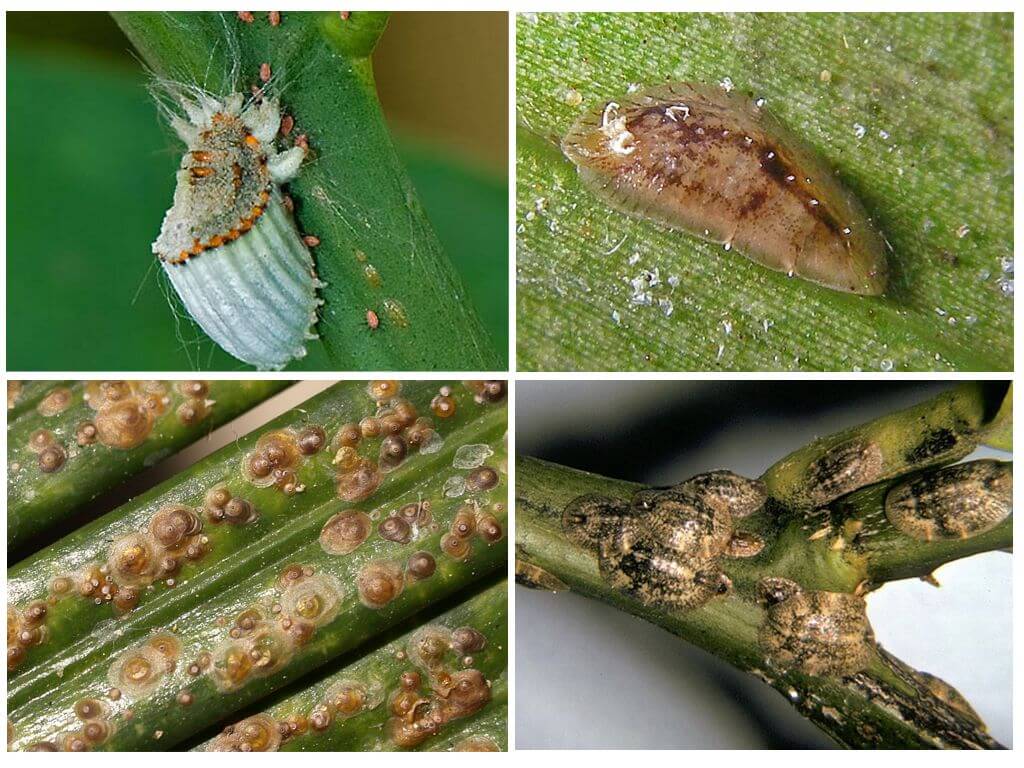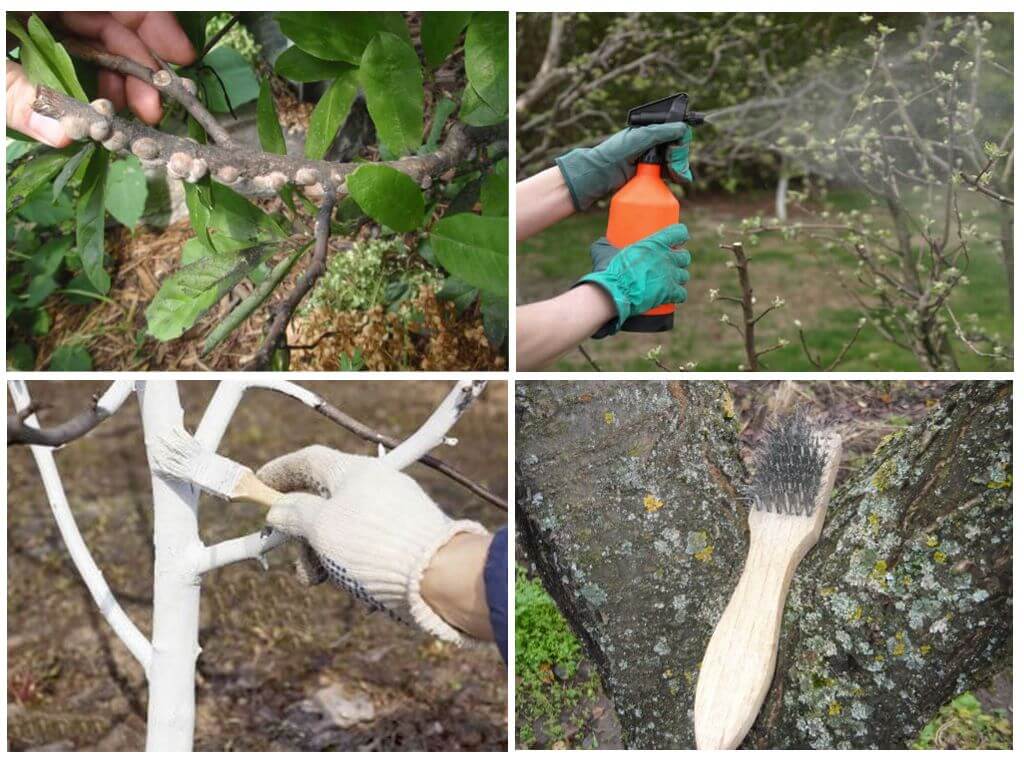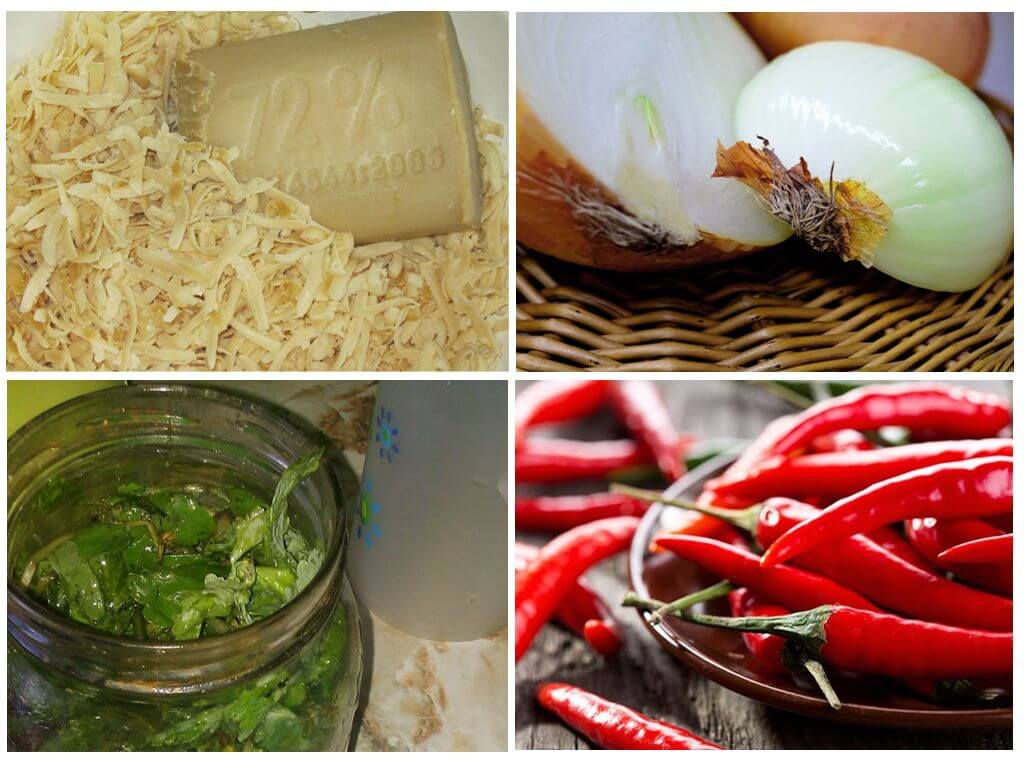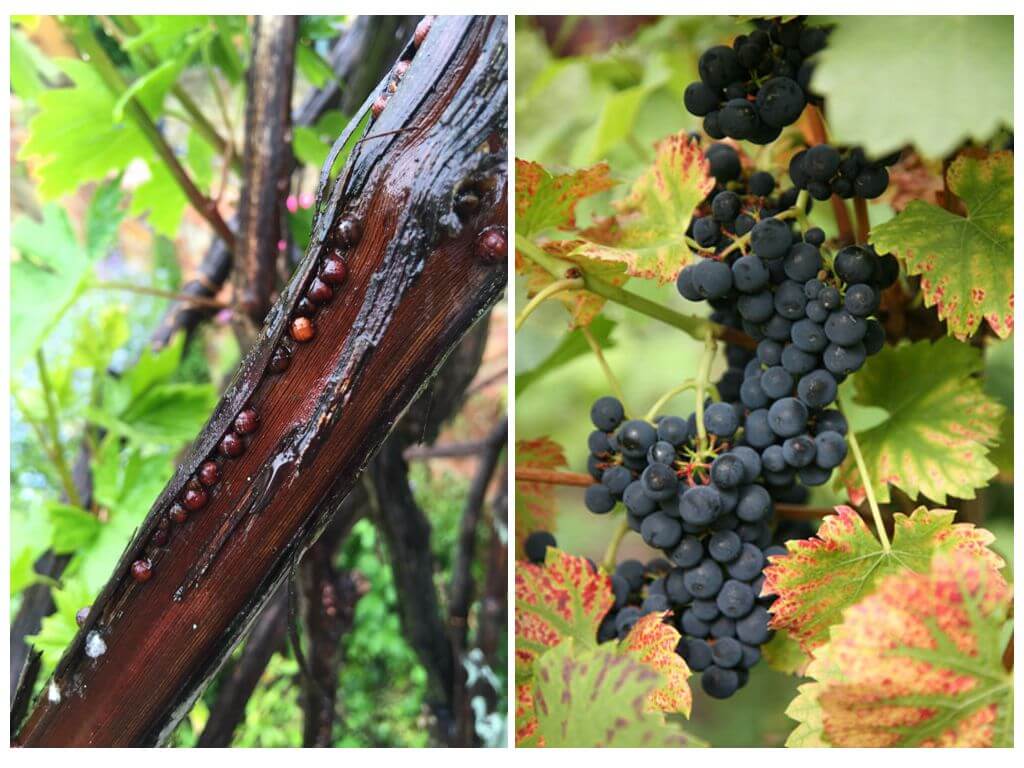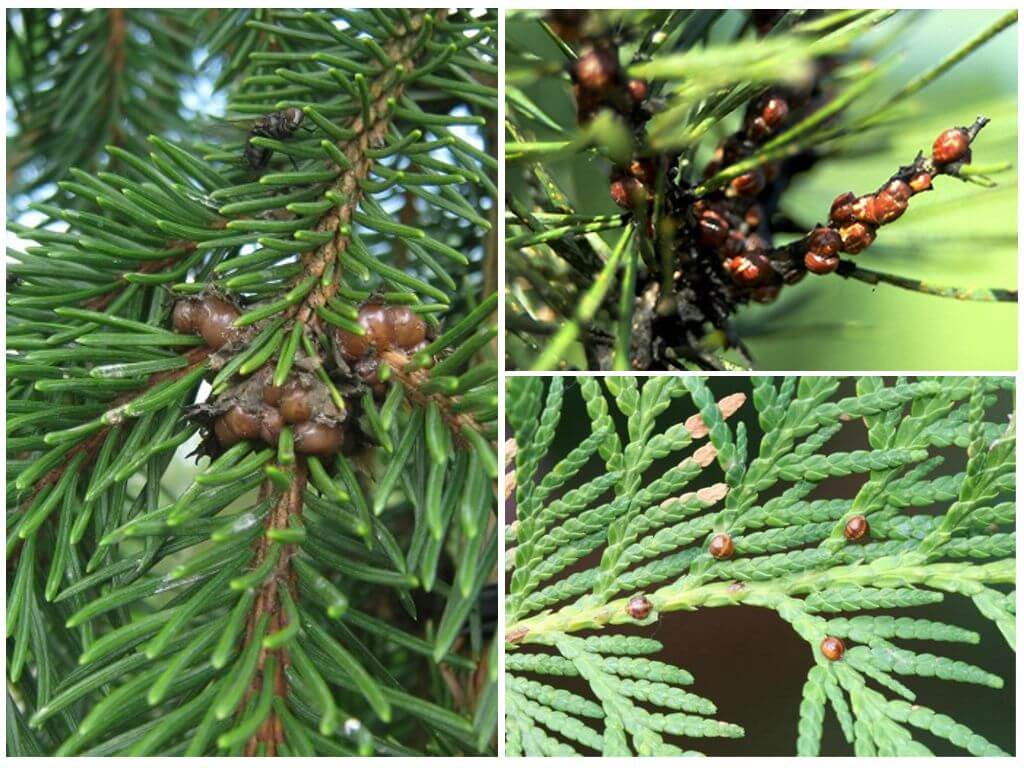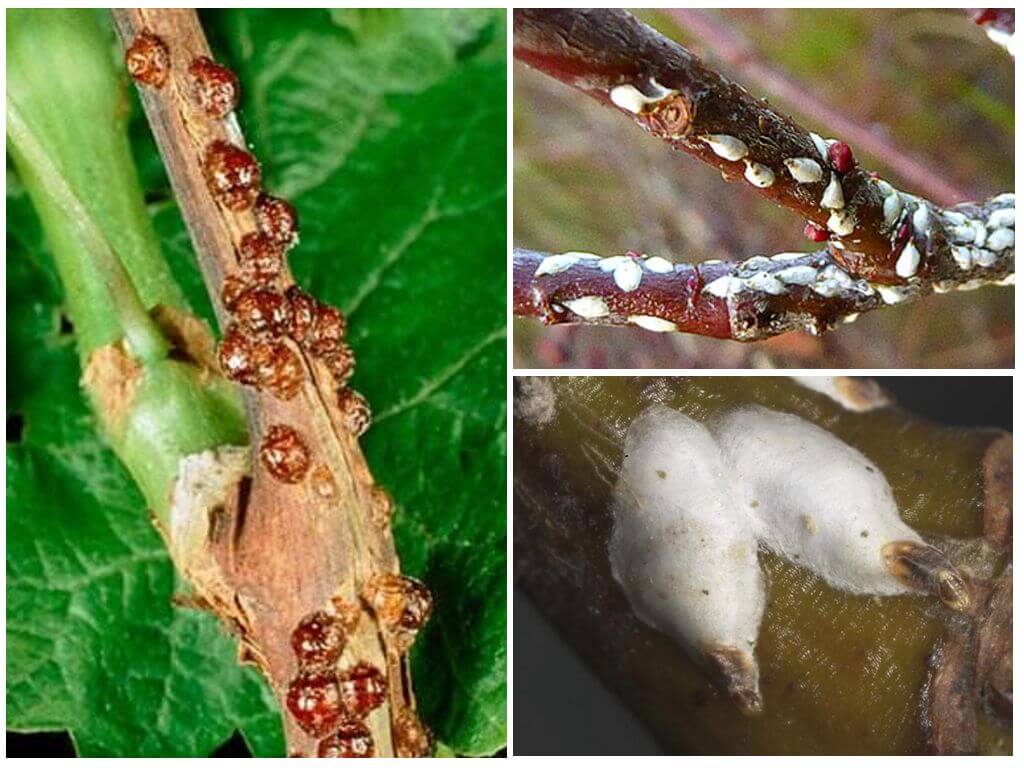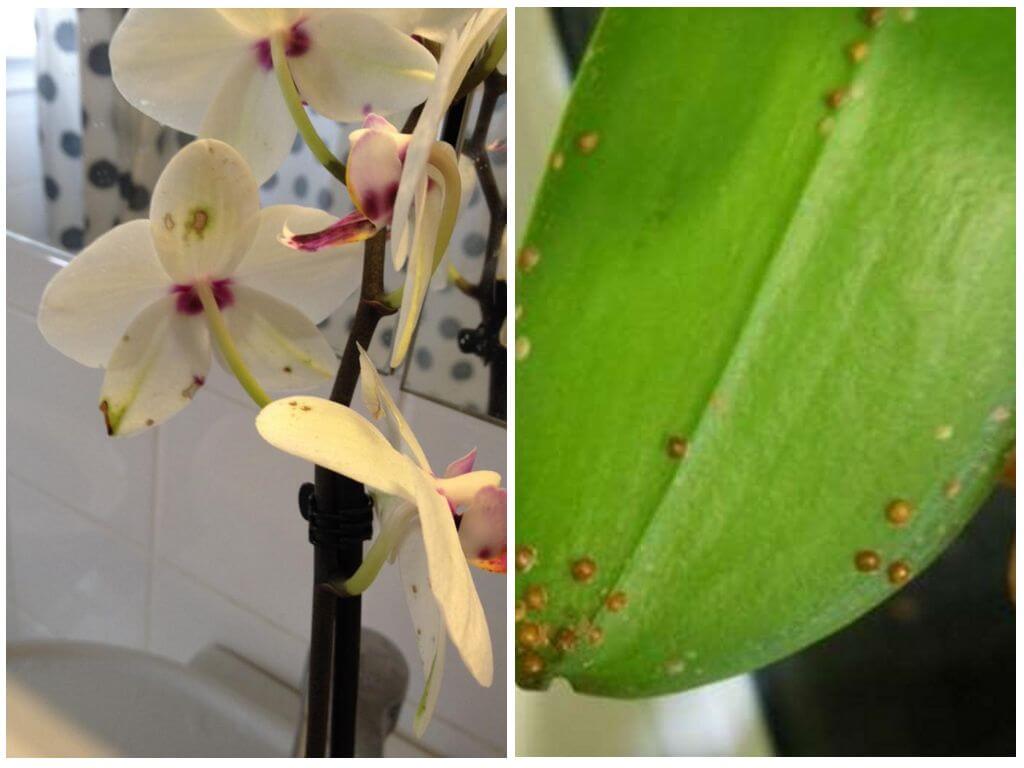- Types of scale insects
- Scalp reproduction
- Methods of struggle
- Folk recipes from the pest
The scabbard is a small insect, a pest of horticultural crops, surprising in its camouflage capabilities. There are various methods of dealing with scale insects on trees in the garden, both folk and chemical, that will help get rid of it.
Shield and its types
The peculiarity of this insect is manifested in the presence of a protective shield, consisting of the remnants of the scales of the larva glued together with its secretions. Outwardly, such a shell is very similar to irregularities in the surface of the tree bark, which complicates the visual detection of the pest.
The size of the insect does not exceed 5 mm, its main occupation is to suck out the sap from the plants, therefore it is necessary to deal with scale insects in the garden, otherwise, with its mass reproduction, the bark, fruits and ovaries on the tree will be covered with placers of these pests. Insects also secrete honey dew, which becomes a breeding ground for the growth of sooty fungi, which is why the affected plants gradually dry out and die.
Signs of the settlement of scale insects:
- yellow spots appear on the leaves, then they turn yellow completely, curl and fall from the branches;
- the bark cracks, thinner and thicker branches begin to fall;
- the growth of the tree is inhibited, which can lead to its complete drying out and death.
Weakened trees are most susceptible to infection with a scale, and excess nitrogen fertilizers, insufficient illumination of plants, lack of moisture, and dry air also affect their appearance.
In the summer cottages and garden areas of central Russia you can find several types of scale insects at once:
- Californian - it affects fruit trees: apple trees, peaches, plums, etc. On the branches of a pear, the insect shield looks like small dots with colored dots or a rim.
- Comma-shaped - has a white body, similar in shape to a comma, looks like a growth on the bark of a tree up to 4 mm in size, on top of the female there is a light brown shield. During reproduction, the female lays up to 100 eggs and dies, and the nest, covered with a protective shell, hibernates safely even in frosts down to -30 ° C. In spring, young yellow tramps of a yellow microscopic size of about 0.3 mm quickly move around the tree trunk in search of food, at which point they are easiest to spot. Then they stick to a specific place in the cortex and “grow” to it, dropping their paws.
- Willow false shield - differs from other species in wide and flat carapace of white or gray color, size 1.8-2.5 mm. Females have a yellow-red body, they lay purple-red eggs. Willow settles currant shield, raspberries, gooseberries, as well as willow, bird cherry, aspen and other trees.
Scalp reproduction
Females of the Californian scale insect immediately lay up to 140 live oval yellow-lemon larvae. Having grown up a bit, strollers actively begin to move along the branches of the plant. Driving the proboscis into the bark, they secrete a wax secret in the form of threads that stick around their body and gradually harden, becoming a gray shell. After 10-12 days, the cover is discarded during molting, the larva passes to the next stage of growth. When cold weather sets in, the shell becomes denser and turns black.In winter, you can find larvae of the first and second age, as well as already adult reproductive females, scaleflies on cherry plum and other trees.
With the onset of spring heat, with the beginning of sap flow, all generations of scale insects awaken and are ready for vigorous activity. Larvae settle on all branches, leaves, shoots on a tree. Larvae feed on plant sapsucking on its leaves. This time is ideal for the main stage of pest control.
The scale shield on the apple tree and other fruit trees is capable of completely covering the trunk and branches, due to which the damaged bark dies, the diseased leaves fall, and thin branches dry out. Ill trees are more easily affected by other pests: bark beetle and black cancer. On felt cherry, they can damage all small shoots and leaves in a few days.
On a note!
The spread of insects between the trees occurs through the crawling of “tramps” larvae along closed branches.
Methods of struggle
It is very difficult to exterminate the scale shield, because adult individuals are protected by a durable chitinous shell, and most toxic chemicals do not act on them. As a result, they can only be cleaned manually from the bark of trees.
The scab on the plum, on the cherry and other fruit is scraped from the bark using a metal brush or a special scraper, and adult females must be destroyed along with the laid eggs. With severe irreversible damage, the dead branches are trimmed and burned.
On seedlings, scabs discovered by scabbard are removed mechanically, and branches are additionally washed with a solution of laundry soap. Similarly, they fight the parasite on decorative indoor plants.
But young larvae, especially in their mobile period, are susceptible to pesticides.
Before starting the fight against scabies on cherries and other fruit, the following rules must be considered:
- water the surrounding land well;
- It is recommended that you first try non-toxic methods of control;
- spraying with a soap solution can be done no more than once every 7 days, it is better to use a mild liquid soap;
- to increase the effectiveness of drugs should be used alternately.
After scraping, the tree must be treated with insecticides. Experts recommend the following drugs:
- Actellik - an emulsion for combating garden pests, is not addictive, but it is dangerous for animals and people, because it has a pungent smell;
- Aktara - a highly effective tool, dangerous for bees, is not used in residential premises;
- Bitoxibacillin is a drug with live bacteria, safe for humans and animals, there is no smell, but treatment must be done several times. Valid only at air temperatures above + 18˚С;
- The drug 30 is an environmentally friendly product that is used in spring until flowers appear on the trees.
Important!
When using all of the above funds, be sure to wear protective clothing, a respirator and gloves so as not to get poisoned.
Folk methods
There are many popular methods that have been tested by gardeners for more than a decade to deal with scale insects on pear, apple, peach, etc.:
- The use of a solution of grated laundry soap and chopped garlic in proportion with water 1: 1: 3. Sick plants need to be sprayed, and after a day wash with clean water from a hose. Repeat the procedure every 3 days until the parasites disappear.
- Onion infusion is made of 4 onions, poured with 1 liter of water, leave for 3-4 hours, then strain and apply for spraying.
- Pour fresh chopped bitter pepper 100 g with a liter of water and cook for 10-15 minutes, then leave for 24 hours and filter. When processing, green soap is added at the rate of: per 1 liter of water 10 g of pepper tincture and 5 g of soap;
- 300 g of wood ash pour 1 liter of boiling water, cook for 30 minutes, cool and strain, dilute with water to 10 liters and spray plantings.
- 3-4 kg of fresh celandine infuse in 10 liters of water per day, can be used for watering and processing trees.
Non-chemical means of control
For the fight against scale insects on peaches, cherries, etc. biological methods can also be used:
- predatory wasps or ladybugs released on fruit bushes and trees are able to eat pests quickly enough, and then simply fly away for prey further;
- the use of a weak solution of liquid soap with water (2 teaspoons per 3.5 liters) to wash the stems and leaves on both sides will help in the fight against scale insects;
- Processing with special horticultural oil (nimov) will be even more effective.
To avoid infection with pests, it is necessary to purchase seedlings and cuttings for your garden only in specialized nurseries, which guarantee the absence of diseases and pests.
